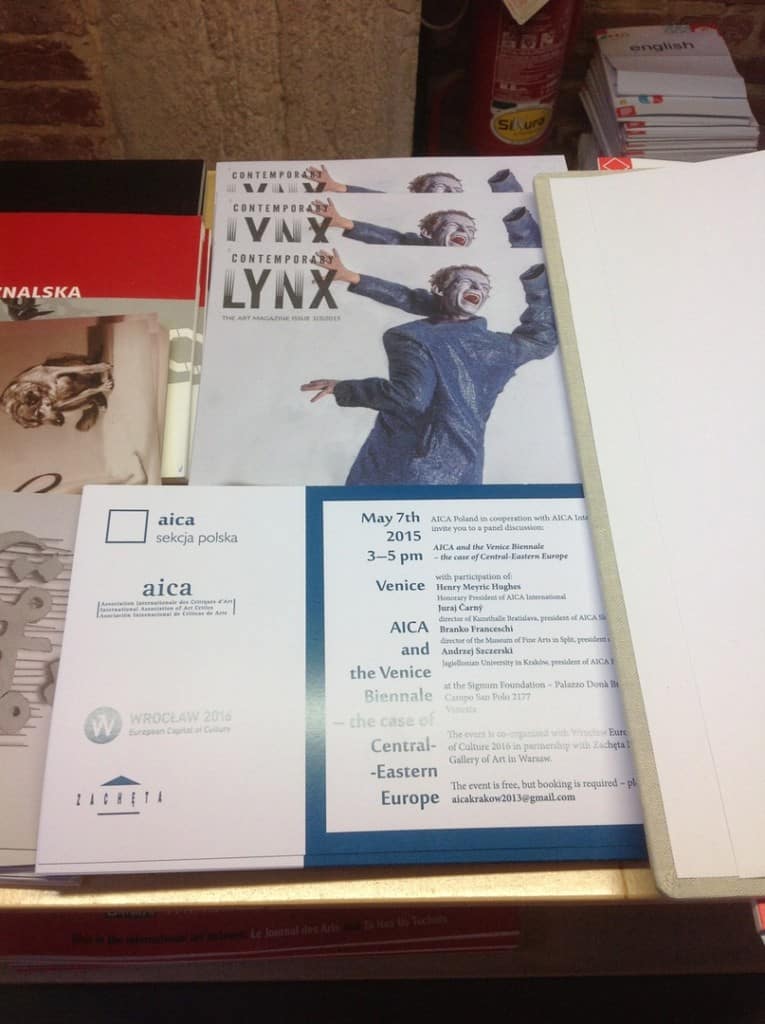The sun in the blue sky shining high above us and narrow streets bathed in sunlight or hidden in deep shadows. Bright paving stones and azure-coloured water filling the canals spanning across the city. Venice is a city of extremities.

Venice 2015, photo Contemporary Lynx
While overcrowded in the summer, it is empty and quiet in the winter. It is the place which overflows with people, but in an artificial way. In fact, tourists dominate the local inhabitants. The city is vibrant on the one hand, but on the other, it dies out, people born there emigrate and islands disappear giving in to water, as if unnoticed. The lagoon is vanishing but the city and its inhabitants become hosts of numerous mass festival events.
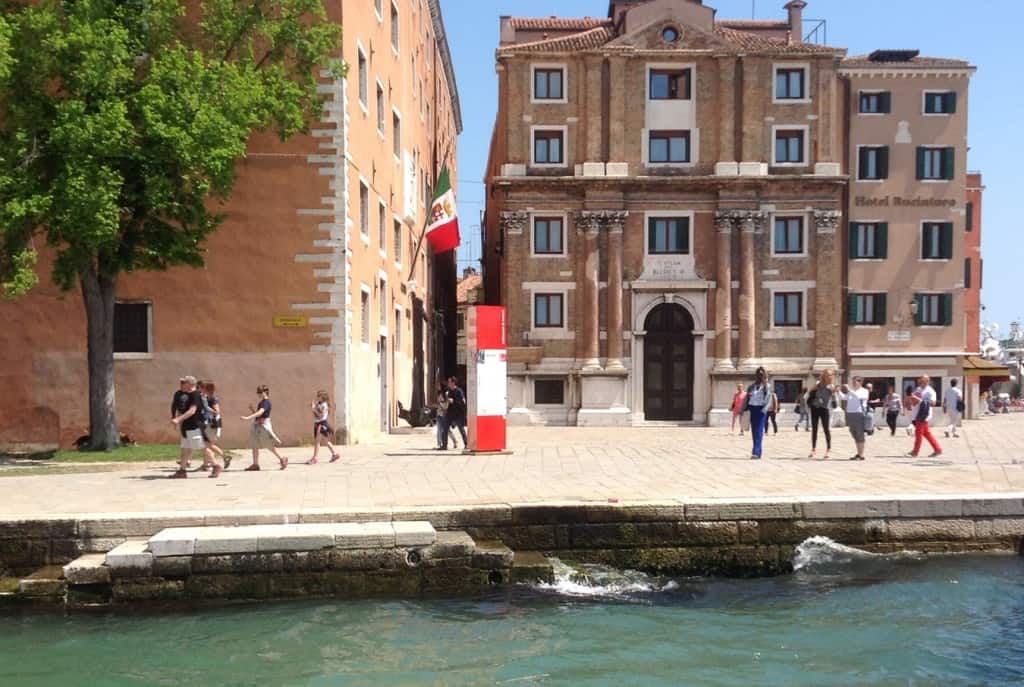
Venice 2015, photo Contemporary Lynx
Since 1895 Lido hands its space over to art. This May Biennale Art Exhibition was opened there for the 56th time. Besides Expo, it is the only event, which follows the 19th century idea of national pavilions. The selected countries which have their own pavilions in Giardini choose their representative(s), usually delegated by the ministry of culture or state institution nominated by the ministry. Is this the right division? Opinions vary. The problem is not so much about the “national character” of culture, but it mostly refers to the rules of selecting the artists and participating countries. There are only thirty permanent national pavilions in Giardini. Most of them were assigned to particular countries in the 1930s and during the Cold War, when the choice of the countries was motivated politically. What about the rest of the countries? Is it right to presume that dividing countries into groups in this way puts some of them in a better position and allows them to participate in this event by default? Some of the countries which do not have their permanent pavilions have to rent exhibition spaces or the whole buildings in Venice, which means paying high rents. Another issue are changing borders and new countries which appear on the map as a result of such transformations. One of the best examples is the former Yugoslavia which used to have its own national pavilion. After the breakup and the creation of six new, independent states, the former Yugoslavian pavilion was assigned to Serbia, while the rest of the countries, for example Croatia, needed to look for new exhibition space.
This extremely complex question was discussed during the special AICA International conference by the presidents of four national branches of this organization: Henry Meyric Hughes – Honorary President of the AICA International, Juraj Čarný – Director of the Kunsthalle Bratislava, President of AICA Slovakia, Branko Franceschi – Director of the Split Museum of Fine Arts, President of AICA Croatia and Andrzej Szczerski – Jagiellonian University in Krakow, President of AICA Poland. The discussed differences and conditions in which pavilions are organized determine and change the idea of Biennale to a great extent.

Henry Meyric Hughes, Branko Franceschi, Juraj Čarný, Andrzej Szczerski, AICA and the Venice Biennale, photo Contemporary Lynx
Let’s go back to the Croatian pavilion for a while. After the breakup of Yugoslavia, Croatia regained its independence and, since then, it does not have the permanent exhibition space in Giardini. The Croatians need to rent appropriate space, however, unfortunately, the choice is not coordinated with the nature of the winning project which is going to represent the country. As a result, very often exhibitions are not in line with the artist’s idea and do not render his intentions in a suitable way.
The situation of Czech Republic and Slovakia is even more interesting. Despite being two independent countries, they share one pavilion in Giardini, called the Czechoslovakian pavilion. This is the relic of the times from before 1989, when they functioned together as one state. After the dissolution of Czechoslovakia, as Juraj Čarný reported, these two new independent states decided to continue to share the common exhibition space. Therefore, a special procedure was developed in which the exhibition curator is selected by the jury nominated by the governments of both states. This rule does not always apply, however, since sometimes the jury directly selects the artist, who later chooses the curator with whom he or she would like to cooperate. Such was the case with Roman Ondak. Another question arises here: do we opt to choose a strong curator with defined judgements and influence the content of the exhibition in this way, making an attempt to present a given subject area as a set of defined notions? Or do we choose an artist and show the artistic personality which is representative for a given country? With the sole gesture of selecting a given artist to present his works in the national pavilion, the country would as if state that this is indeed the most prominent artist working there.

Polish Pavilion, Giardini, Venice 2015, photo Contemporary Lynx
The above-mentioned questions refer to Poland as well. The Polish pavilion is located in beautiful surroundings, by the canal in Giardini. In spite of the fact that Poland seems to have the most stable situation among the countries mentioned, it did not avoid problems and questions regarding the way and manner of the national representative(s)’ selection process. These concerns were mostly brought about by the country’s political situation and the attempts to contest it made by artistic circles. Exhibitions, such as the one we are talking about, created an opportunity to travel abroad and present artistic works there, which was unique for many artists of the time (directors and curators of artistic institutions enjoyed much greater freedom when it came to travelling). During the socialist modernist times and at the time when the Polish People’s Republic existed, the choice of artists representing the country was never against the state’s official cultural policy. However, most of the artists freely interpreted the existing rules. Very often they did not negate them explicitly, but did not strictly follow them either. One of the best examples of such approach were sculptures by Alina Szapocznikow. Another way to go against the established rules were group exhibitions, which gave greater number of artists the opportunity to present their works. This, however, resulted in diverse nature and very uneven level of the art displayed at the event. This downward trend was reversed by Katarzyna Kozyra. She received an honorary award for her work entitled ‘Men’s bathhouse’, which in 1999 represented Poland at the 48th International Art Biennale in Venice. At that time the floor was more and more often given to young artists. An exhibition in the national pavilion ceased to be a ‘masters show’ or a pinnacle of an artistic career. Contrary to that, it became an opportunity for young artists to be seen. Of course, there were exceptions, such as presentations of Krzysztof Wodiczko or Stanisław Dróżdż. In 2011, for the first time Poland was represented by a female artist who was born abroad – Yael Bartana. Nevertheless, the best example representing the new way of thinking about the Polish national pavilion, i.e. seeing it as a chance for new artists, were the works by Monika Sosnowska and Konrad Smoleński, which were created specifically for the exhibition in the Polish pavilion.
Another vital question, initially discussed by the President of AICA Poland – Andrzej Szczerski, was the transparency of the selection process and works submitted for the contest. The archive was opened only last year, so now the persons interested can access the submitted projects. Until last year the remaining, rejected candidatures were only known thanks to, so called, investigative journalism.
What seemed really interesting to us during the debate (in the context of this year’s Polish Pavilion) was the whole existing formula of presenting artist’s works in itself, namely national groups, art which is supposed to characterize and represent a given country, as well as the competition between pavilions which is reflected in natural comparisons, a tendency to see one pavilion through the prism of another and pass judgements. Does such formula make sense? What is it supposed to prove? What is the purpose of maintaining national pavilions, which are, to a great extent, controlled by the ministries of culture of the representing countries? Can it be considered an element of foreign policy? Or does it maybe reflect a direction which the state’s opinion on the role of culture in its own development follows? Is it one of the symptoms of making cultural policy more traditional or liberal (most of the pavilions and projects are financed from the state budget)?

Halka/Haiti 18°48’05”N 72°23’01”W
C.T. Jasper & Joanna Malinowska, Venice 2015, photo Contemporary Lynx
Given the context discussed above, this year’s Polish Pavilion is really interesting. “Halka/Haiti. 18°48’05”N 72°23’01”W” by artists C.T. Jasper and Joanna Malinowska directly refers to the Polish history and culture. On the one hand, the artists decided to take inspiration from one of the most renowned operas of Stanisław Moniuszko – ‘Halka’. On the other, they conducted extensive historical research, which led them all the way to Haiti. Why did they choose this place?
The artists, who won the competition to be the Polish representation for the Venice exhibition, as well as the curator Magdalena Moskalewicz decided to stage ‘Halka’ in Haiti because they got inspired by the frenzied plan of the hero from the movie ‘Fitzcarraldo’ directed by Werner Herzog, who wanted to build an opera house in Amazon jungle. The artists chose Cazale the descendants of Polish soldiers who fought in Napoleon’s legions live to this day. In 1802 and 1803, when the Polish soldiers were sent by Napoleon to colonial San Domingo in order to help crush a rebellion of black slaves, they opposed the French commanders and joined the insurgents fighting for independence. In order to honour their sacrifices, special privileges were granted to Poles in a new constitution of independent Haiti, which made them equal to black citizens. The people of Cazale still call themselves Le Poloné and their family names are creolized versions of Polish family names. Contemporary Lynx talked with the curator of this year’s Polish pavilion – Magdalena Mosklewicz about the idea, preparation and reception of the pavilion. Have a look at our conversation:
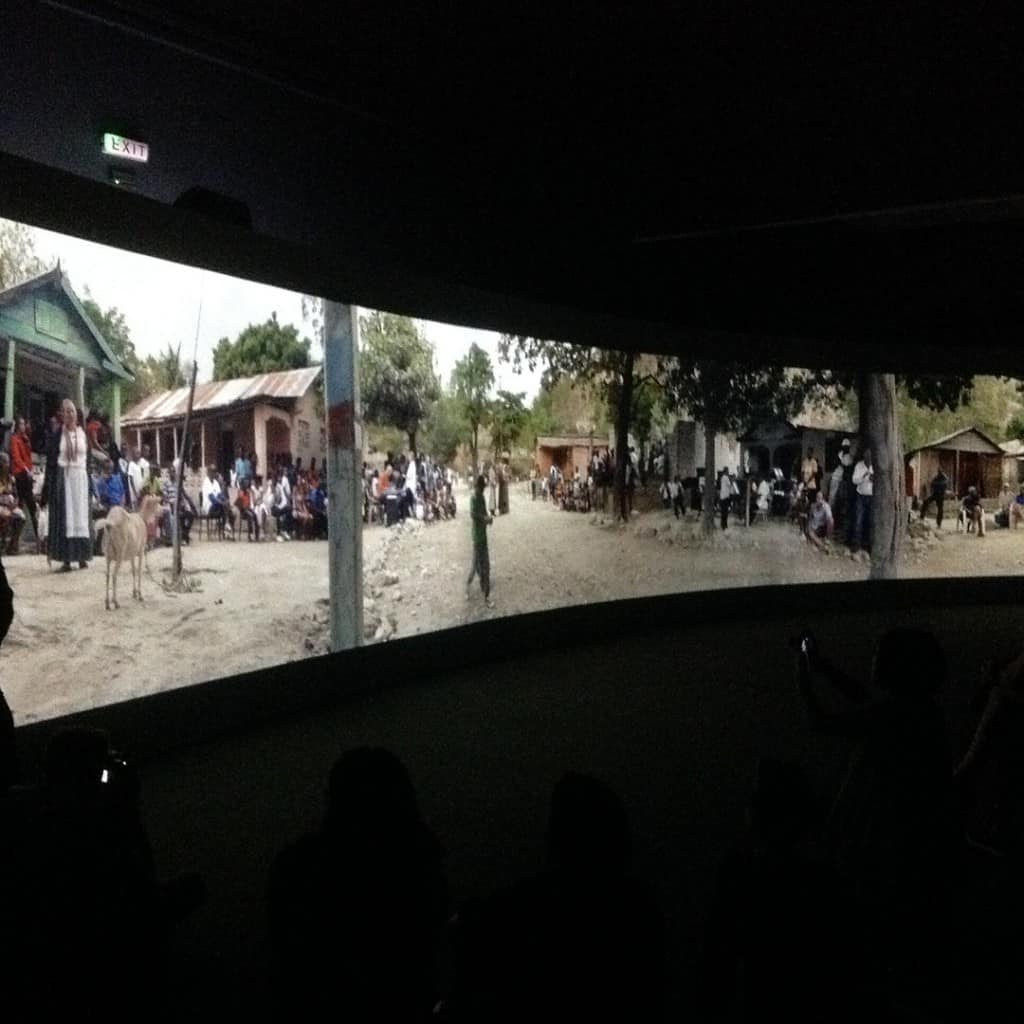
Halka/Haiti 18°48’05”N 72°23’01”W
C.T. Jasper & Joanna Malinowska, Venice 2015, photo Contemporary Lynx
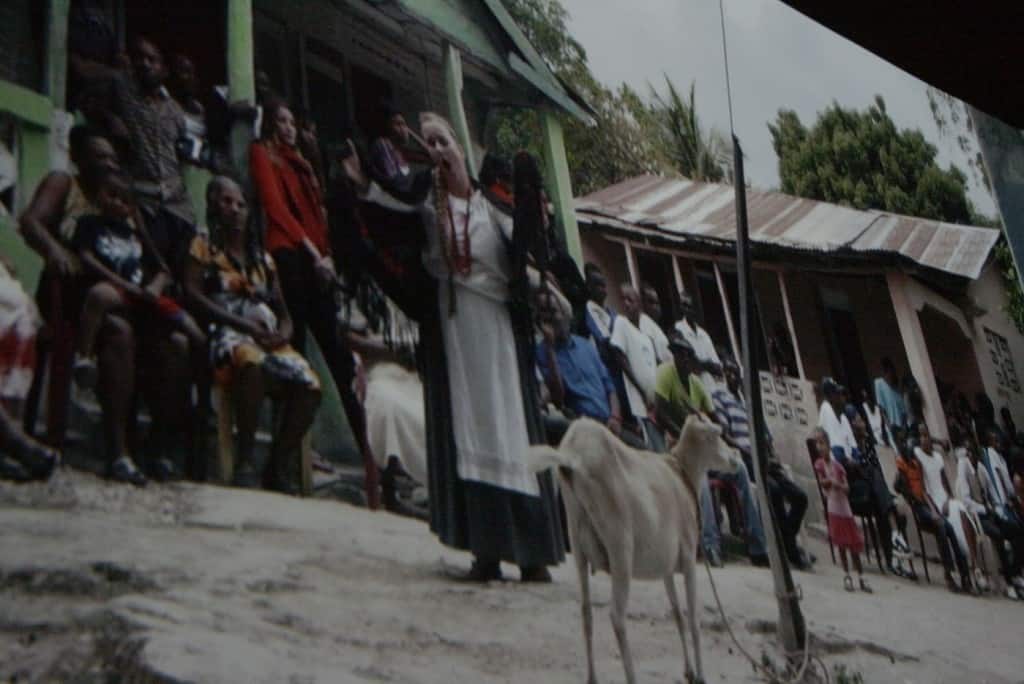
Halka/Haiti 18°48’05”N 72°23’01”W
C.T. Jasper & Joanna Malinowska, Venice 2015, photo Contemporary Lynx

Magdalena Moskalewicz & Contemporary Lynx Team, photo Contemporary Lynx
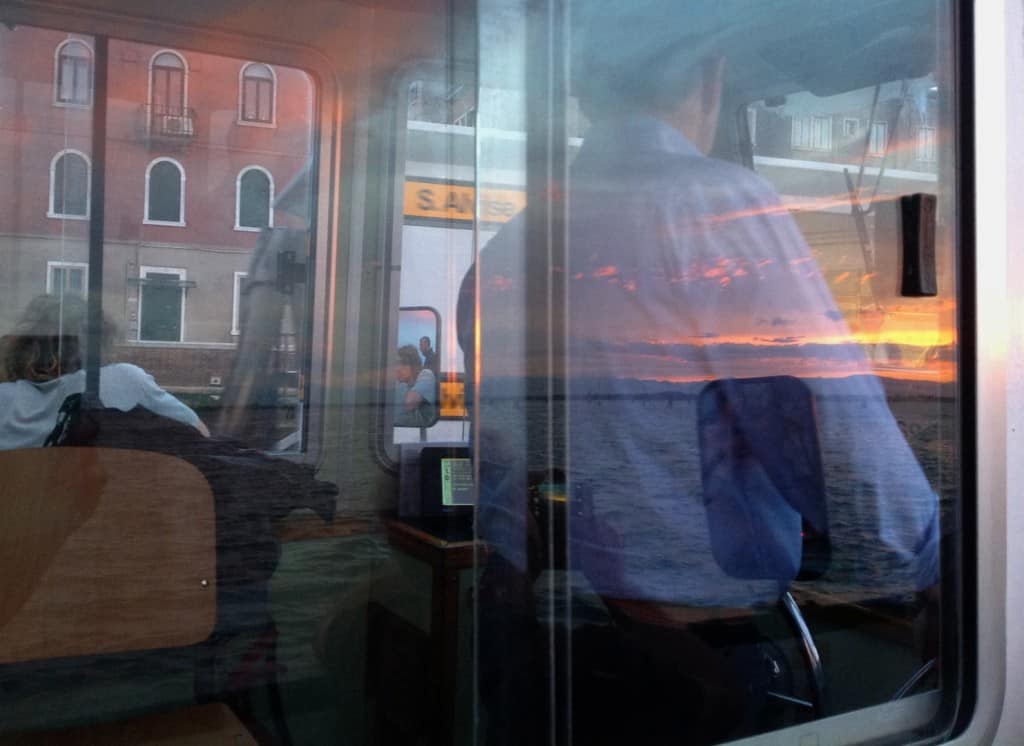
Venice 2015, photo Contemporary Lynx


